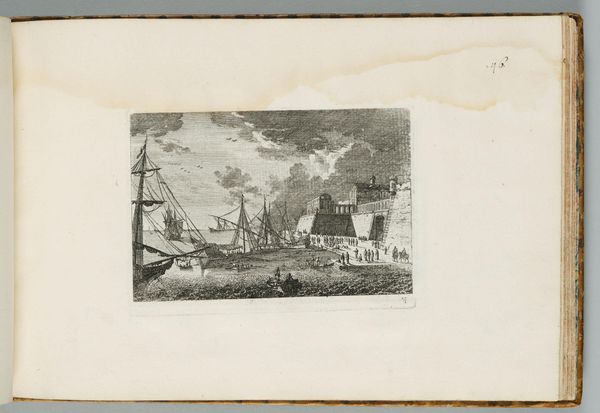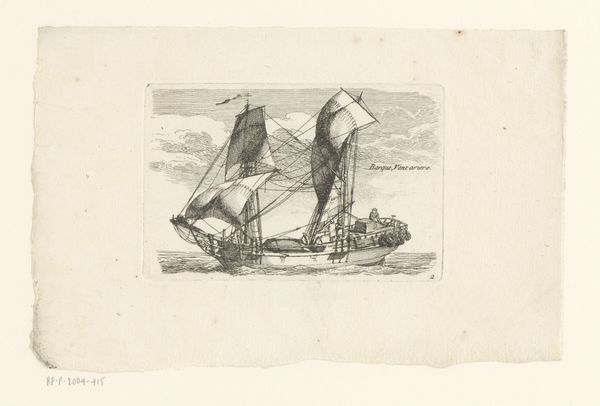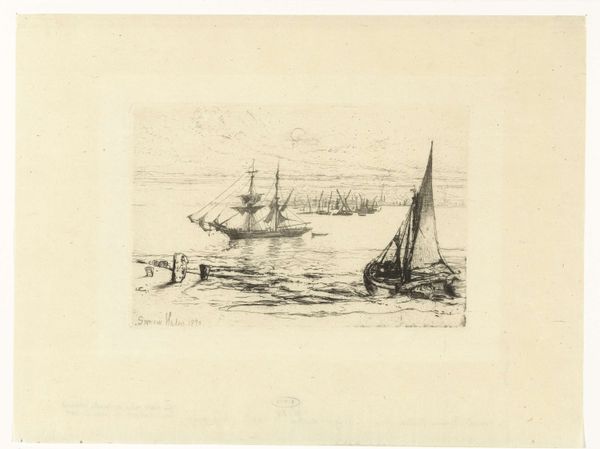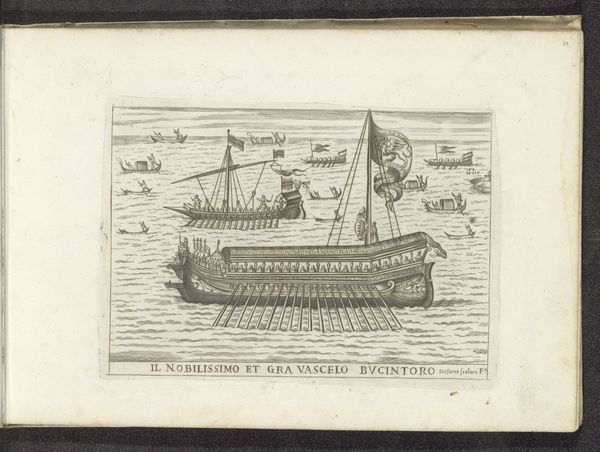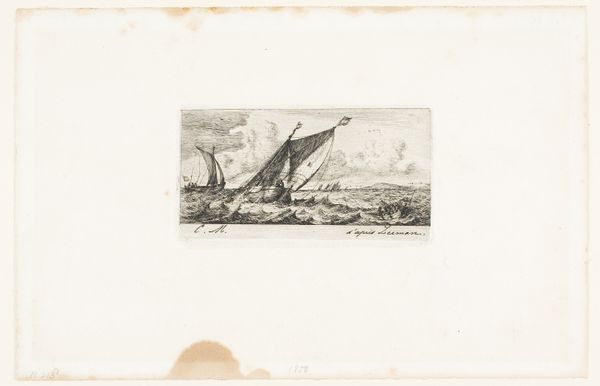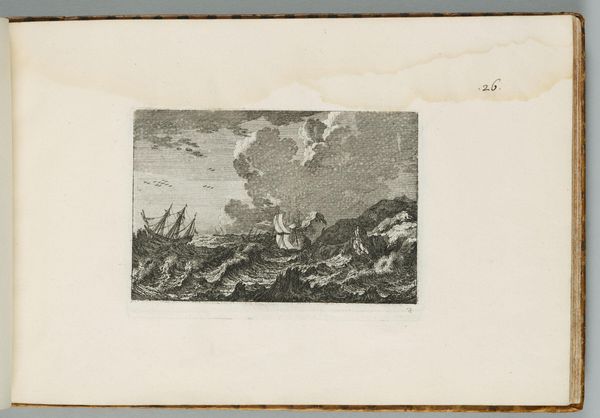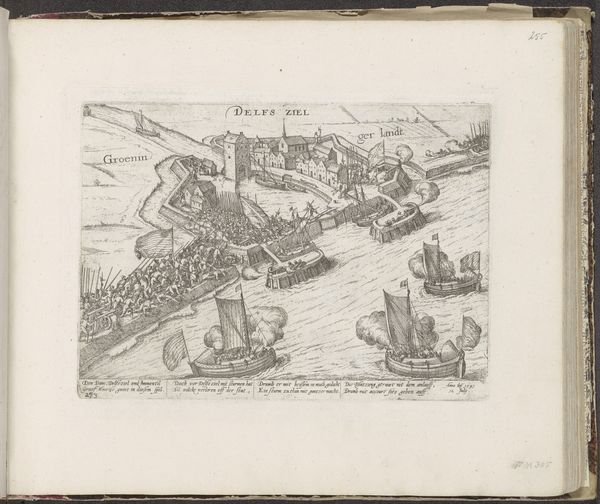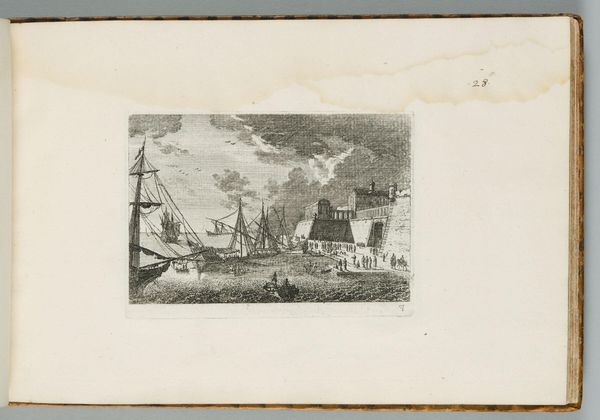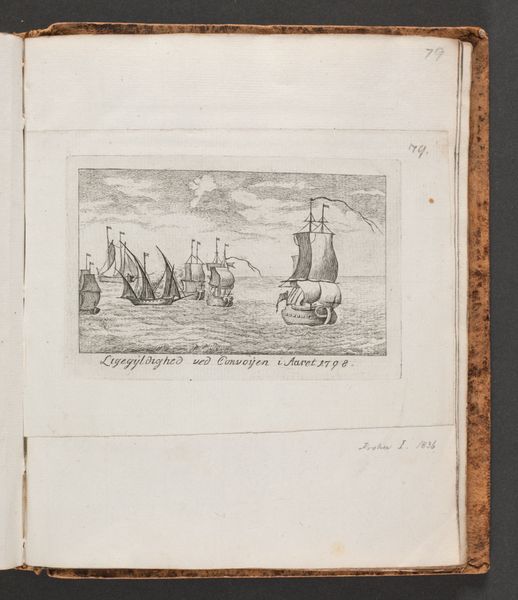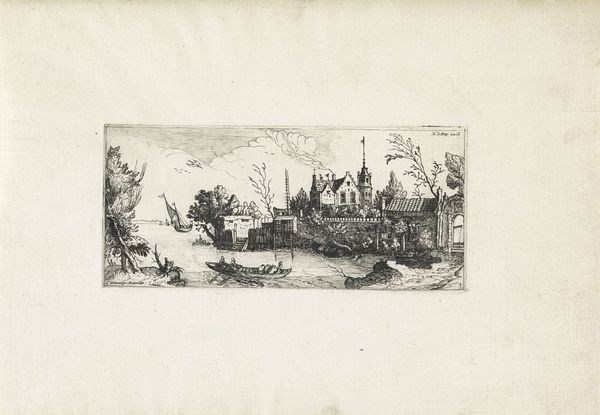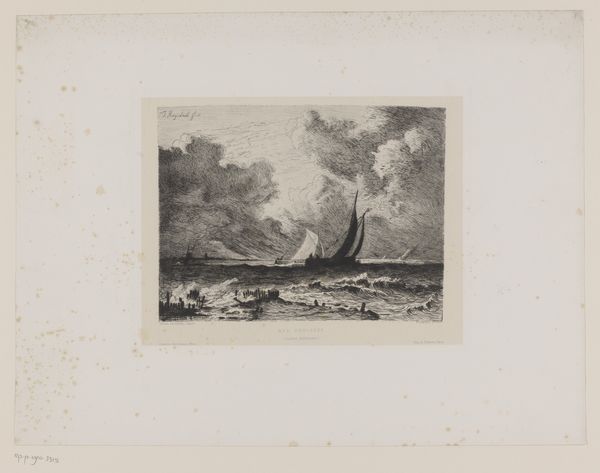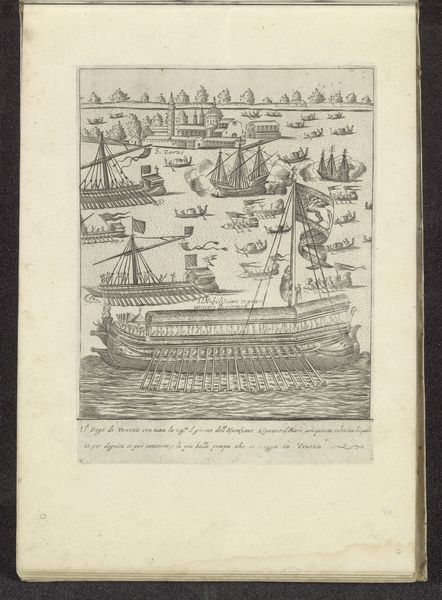
print, paper, engraving
# print
#
landscape
#
paper
#
italian-renaissance
#
engraving
Dimensions: height 132 mm, width 165 mm
Copyright: Rijks Museum: Open Domain
Editor: This is "Trouwfeest op het water te Venetië, 1726," or "Wedding on the Water in Venice" created around 1726. It's an engraving on paper. It looks almost like a documentary scene capturing the labor and transport of goods as much as the festivities. What stands out to you in this piece? Curator: What immediately strikes me is the physical process of its making. Consider the labor involved in producing an engraving. The artist meticulously carves lines into a metal plate, line by line transferring an image intended to highlight not only wealthy social events, but also how wealth relies on other industries. The lines, the marks, tell us as much about craftmanship as about leisure. The materials themselves--the paper, the ink--become witnesses to a system of production and consumption. Editor: That's a different angle than I considered! I was mainly focusing on the celebration aspect, but the material focus really changes how I view this. Does the Italian Renaissance context have a specific effect on how this would be read? Curator: Absolutely. Remember Venice's significance as a major trading hub during that period. This print encapsulates that, doesn't it? You see not only gondolas and celebrations but the clear demonstration of material transactions. The engraver meticulously rendering each vessel tells of trade networks, of resource extraction, and, of course, the patronage systems supporting this art. In fact, notice how the ships are so laboriously constructed by different groups of laborers. How can these laborers participate in the wealth that this image also portrays? Editor: So it's not just about documenting a wedding, but about the entire socioeconomic structure that makes such an event possible. Thinking about the material processes helps reveal these layers of meaning. Curator: Exactly. It shows us the intersection of labor, materials, and power dynamics inherent in the very fabric of Venetian society. Editor: I’ve definitely gained a new perspective. Thank you! Curator: My pleasure. Considering these things allows us a far more grounded interpretation.
Comments
No comments
Be the first to comment and join the conversation on the ultimate creative platform.
